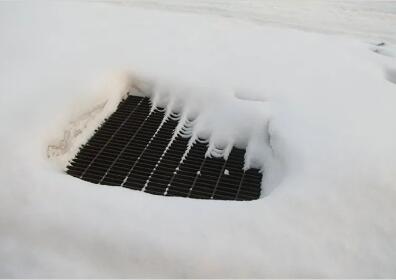Why Low-Temperature Resistant Steel Grating Is Essential for Cold Climate Infrastructure
2024-08-12
When it comes to building and maintaining infrastructure in cold climates, one of the most critical considerations is the selection of materials that can withstand extreme temperatures. Low-temperature resistant steel grating is a specialized material designed to perform under such conditions, offering a combination of strength, durability, and safety. In this blog, we’ll explore why low-temperature resistant steel grating is essential for cold climate infrastructure and how it contributes to the longevity and reliability of various projects.
1. Challenges of Cold Climate Infrastructure
Cold climates pose unique challenges for infrastructure projects. Materials that are commonly used in warmer regions may not perform well in sub-zero temperatures. Standard steel, for instance, can become brittle and lose its load-bearing capacity when exposed to extreme cold. This can lead to catastrophic failures in structures such as bridges, walkways, and industrial platforms. Low-temperature resistant steel grating addresses these challenges by providing a material that remains tough and resilient, even in the coldest environments.
2. Key Features of Low-Temperature Resistant Steel Grating
- Toughness and Resilience: Unlike standard steel, which can fracture or crack in cold conditions, low-temperature resistant steel grating retains its toughness. This is achieved through the use of specialized alloys that enhance the steel's ability to absorb impact and resist deformation at low temperatures.
- Corrosion Resistance: Cold climates often bring moisture, snow, and ice, which can accelerate the corrosion of metal structures. Low-temperature resistant steel grating is often treated or coated to resist corrosion, ensuring that it remains functional and safe for longer periods.
- Load-Bearing Capacity: The ability to support heavy loads is crucial for infrastructure projects. Low-temperature resistant steel grating is designed to maintain its load-bearing capacity even in freezing conditions, making it suitable for high-traffic areas, heavy equipment platforms, and other critical applications.
3. Applications in Cold Climate Infrastructure
- Transportation Infrastructure: Bridges, highways, and pedestrian walkways in cold regions benefit greatly from the use of low-temperature resistant steel grating. It ensures that these structures remain safe and operational during winter, when temperatures can drop significantly.
- Industrial Facilities: In industrial settings, such as power plants, refineries, and manufacturing facilities located in cold climates, low-temperature resistant steel grating is used for platforms, walkways, and safety barriers. It helps prevent accidents and equipment failures caused by brittle materials.
- Public and Commercial Buildings: Outdoor staircases, ramps, and drainage grates in public and commercial buildings must remain safe to use in all weather conditions. Low-temperature resistant steel grating provides the necessary durability and slip resistance to keep these structures safe during the winter months.
4. Selecting the Right Low-Temperature Resistant Steel Grating
When choosing low-temperature resistant steel grating for a project, several factors should be considered:
- Material Grade: The grade of steel used in the grating should be selected based on the specific temperature range and environmental conditions of the location. Alloys with higher nickel or chromium content may offer better performance in extremely cold conditions.
- Surface Treatment: To enhance corrosion resistance and longevity, the grating may be galvanized, coated, or treated with anti-corrosion finishes. This is particularly important in areas with high moisture or exposure to salt, such as coastal regions or roadways treated with de-icing chemicals.
- Design Specifications: The grating’s design should be tailored to the specific needs of the project, including load requirements, span lengths, and safety features such as serrated surfaces for slip resistance.
Conclusion
Low-temperature resistant steel grating is an indispensable material for infrastructure projects in cold climates. Its ability to withstand extreme temperatures, resist corrosion, and maintain structural integrity under heavy loads makes it a vital component in ensuring the safety, reliability, and longevity of critical structures. By carefully selecting and implementing this specialized grating, engineers and builders can create infrastructure that stands the test of time, even in the harshest environments.



